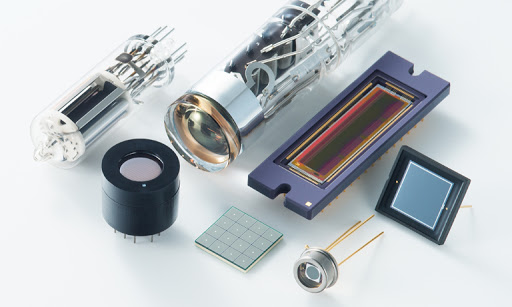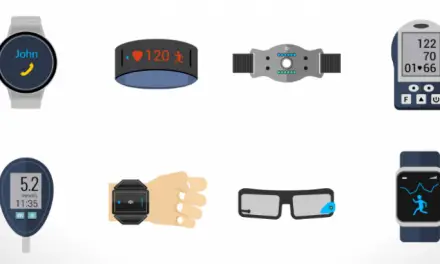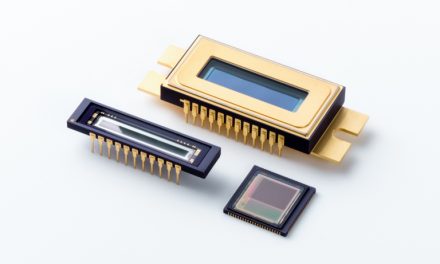Sensors can be found everywhere. Our mobile phones have them, televisions have them, and even lights now come with sensors. This article explains the different types of optical sensors.
Before we begin explaining the various optical sensor types, let us start with the definition of the optical sensor.
Table of Contents
What is an Optical Sensor?
Optical sensors are sensors that convert light, or a change in light, into an electronic signal. These devices are used in many industrial and consumer applications. They detect electromagnetic radiation from the infrared part of the electromagnetic spectrum right up to ultraviolet wavelengths.
The various types of optical sensors detect the physical quantity, light, and convert it into an electrical form. They are usually part of a larger system that integrates a source of light, a measuring device and the optical sensor.
Types of Optical Sensors
There are various optical sensor types. In this section various optical sensor types will be explored.
1. Pyrometers
Objects give off light which correspond to their temperature. They produce the same colours at the same temperatures. The pyrometer is an optical sensor that is used to estimate the temperature of an object by sensing the colour of the light that the object gives off. Optical pyrometers are older devices, and the more recent ones introduced are electronic pyrometers. These use light sensitive semiconductors to measure the temperature automatically. Pyrometers are used when direct contact is unsafe, inconvenient or impossible. An example of this is in monitoring smelting furnaces and determining the temperature of stars.
2. Photo Detectors
These are light sensitive semiconductor materials. These can be photodiodes, photovoltaics, or phototransistors. These optical sensor types must be part of a switching or amplification circuit. This is because they carry only small amounts of current. These are used to control elevator door closers, and in assembly line part counters as well as in safety systems
3. Photoconductive Devices
These are optical sensor types that change the light that is incident into varying levels of resistance. An example is a photo resistor. This is an active component whose resistance decreases with respect to the light incident on the surface. It has a high resistance in the dark, and has a low resistance when exposed to light. These are used in laser based security systems to detect the change in the light intensity when an object, or person passes through the laser beam.
4. Fibre Optics
These are types of optical sensors that have advantages over standard electrical cabling based sensors. The fibres carry no current, and thus, they are immune to electrical interference. They pose no sparking or shock hazard if the cable is damaged. The light in the fibre may be used as the sensor itself, or may serve as a signal path for a separate sensor package depending on the design.
5. Through Beam Sensors
These optical sensor types are made up of two separate components. There is the transmitter and the receiver, and these are placed opposite to each other. The transmitter projects a light beam onto the receiver. An interruption of the light beam is interpreted as a switch signal by the receiver, and it is irrelevant where the interruption occurs. This allows large operating distances to be achieved, and allows the recognition of a large variety of objects as the recognition is independent of the object’s colour, reflectivity or structure.
6. Retro-Reflective Sensors
In these optical sensors, the transmitter and receiver are both encased in the same housing. The emitted light beam is directed back to the receiver through a receiver. An interruption of the light beam indicates a switching operation, and the place where the interruption occurs is of no importance. This allows large operating distances with switching distances, and all the objects that interrupt the light beams are accurately detected regardless of their colour or surface structure.
7. Diffuse Reflection Sensors
In these types of optical sensors, the transmitter and the receiver are in one housing. The transmitted light is reflected by the object to be detected. These sensors use the diffused light intensity at the receiver as the switching condition. The rear part always reflects better than the front part regardless of the sensitivity setting. This has the problem that it leads to erroneous switching operations.
Applications of Optical Sensors
1. Ambient Light Sensors
This is quite a common application of optical sensors. In this application, the optical sensor detects the amount of light present and carries out a relevant actions that corresponds to the amount of light. For example, in smartphones, the brightness of the screen is increased outside where there is bright light, and it is automatically reduced indoors where there is no need for bright light.
2. Biomedical Applications
Various optical sensor types have a point of application in the biomedical field. Optical heart rate monitors use optical sensors to measure the heart rate of a patient. Light is shone onto the skin, and the optical sensor examines the light that is reflected back. Blood absorbs light, and therefore the fluctuations in the light levels can be translated into the heart rate. This process is commonly referred to as photoplethysmography.
3. Liquid Level Indicators
In this application, an Infrared transmitting component projects infrared light outward. When the sensor tip is surrounded by air, the light bounces back within the tip of the optical sensor before returning to the light transistor present. When the sensor is immersed in a liquid, the light disperses throughout and less of the light is returned to the transistor. The amount of reflected light to the transistor affects the output levels, thus, making level sensing possible.
4. Industrial Applications
Some industries deal with explosive chemicals and gases. Optical sensors that make use of fibre optics are perfect for such applications as they will be quite safe to use in these environments. As a result, it is quite common to find optical sensors being used in oil and gas applications, as well as pipeline monitoring.
Conclusion
This article explained what optical sensors are. Various optical sensor types were brought out and the applications of the optical sensors were given.
We hope you enjoyed the article.





